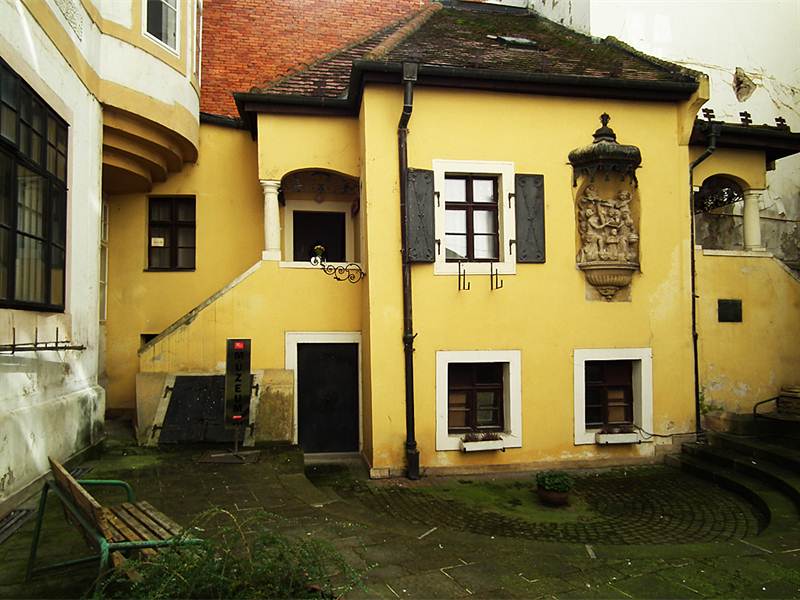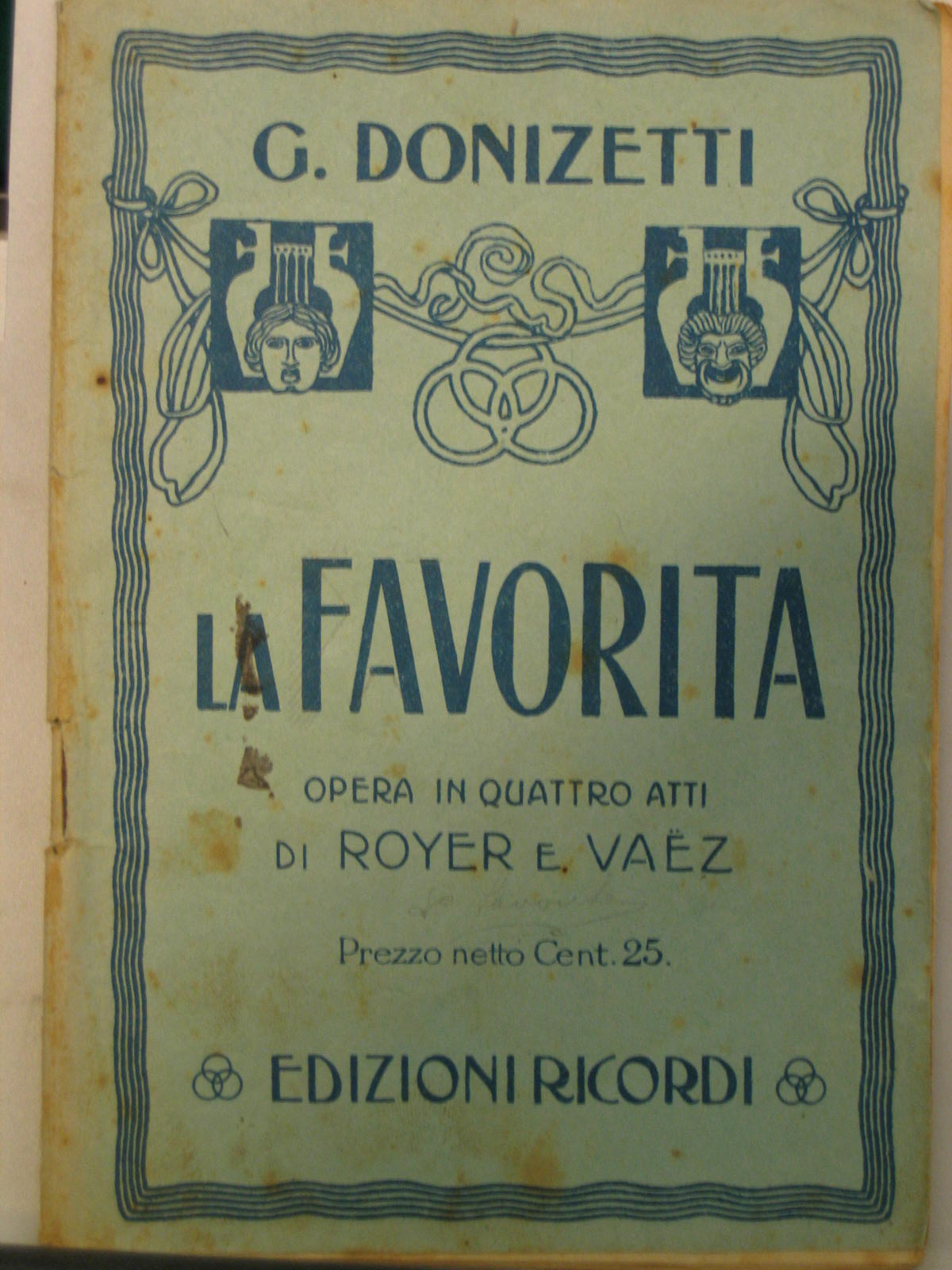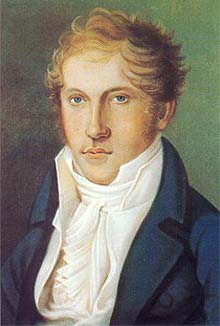|
1839 In Music
This article is about music-related events in 1839. Events *March 21 – Felix Mendelssohn conducts the first known performance of Franz Schubert's '' Great C Major Symphony'' *November 17 – Giuseppe Verdi's first opera, '' Oberto, Conte di San Bonifacio'', opens at La Scala, Milan. Classical music *Hector Berlioz – '' Romeo et Juliette'' *Frédéric Chopin ** Ballade No. 2 ** Scherzo No. 3 ** Piano Sonata No. 2 *Mikhail Glinka **La séparation **Polonaise **Valse-Fantasie *Johann Nepomuk Hummel – ''2 Preludes and Fugue for Organ'' (published posthumously) *Joseph Lanner – ''Amazonen-Galopp''; ''Malapou Galop'' *Franz Liszt **Valse mélancolique, S.210 **Angiolin dal biondo crin, S.269 **Fantaisie sur des motifs favoris de l'opéra 'La sonnambula', S.393 *Felix Mendelssohn **6 Gesänge, Op. 47 ** Piano Trio No. 1 in D Minor, Op. 49 **"Liebe und Wein" *Robert Schumann: **''Arabesque'' in C, Op. 18 **'' Blumenstück'' (''Flower Piece'') in D, Op. 19 **''Humoreske'' in B, ... [...More Info...] [...Related Items...] OR: [Wikipedia] [Google] [Baidu] |
1839
Events January–March * January 2 – The first photograph of the Moon is taken, by French photographer Louis Daguerre. * January 6 – Night of the Big Wind: Ireland is struck by the most damaging cyclone in 300 years. * January 9 – The French Academy of Sciences announces the daguerreotype photography process. * January 19 – British forces capture Aden. * January 20 – Battle of Yungay: Chile defeats the Peru–Bolivian Confederation, leading to the restoration of an independent Peru. * January – The first parallax measurement of the distance to Alpha Centauri is published by Thomas Henderson. * February 11 – The University of Missouri is established, becoming the first public university west of the Mississippi River. * February 24 – William Otis receives a patent for the steam shovel. * March 5 – Longwood University is founded in Farmville, Virginia. * March 7 – Baltimore City College, the third public high school in the United States, is established i ... [...More Info...] [...Related Items...] OR: [Wikipedia] [Google] [Baidu] |
Johann Nepomuk Hummel
Johann Nepomuk Hummel (14 November 177817 October 1837) was an Austrian composer and virtuoso pianist. His music reflects the Transition from Classical to Romantic music, transition from the Classical period (music), Classical to the Romantic music, Romantic musical era. He was a pupil of Mozart, Salieri and Muzio Clementi, Clementi. He also knew Beethoven and Schubert. Life Early life Hummel was born as an only child (which was unusual for that period) in Pressburg, Kingdom of Hungary (now Bratislava, Slovakia). He was named after the Czech patron saint John of Nepomuk. His father, Johannes Hummel, was the director of the Imperial School of Military Music in Vienna; his mother, Margarethe Sommer Hummel, was the widow of the wigmaker Josef Ludwig. The couple married just four months beforehand. Hummel was a child prodigy. At the age of eight, he was offered music lessons by the classical composer Wolfgang Amadeus Mozart, who was impressed with his ability. Hummel was taught ... [...More Info...] [...Related Items...] OR: [Wikipedia] [Google] [Baidu] |
Giuseppe Lillo
Giuseppe Lillo (26 February 1814 - 4 February 1863) was an Italian composer. He is best known for his operas which followed in the same vein of Gioachino Rossini. He also produced works for solo piano, a small amount of sacred music, and some chamber music. Francesco Bussi. "Lillo, Giuseppe", ''The New Grove Dictionary of Music and Musicians'', 2001. Life and career Born in Galatina in the Province of Lecce, Lillo was the son of conductor Giosuè Lillo. He received his earliest musical training from his father before entering the Naples Conservatory where he studied harmony and counterpoint with Giovanni Furno, piano with Francesco Lanza, and composition with Niccolò Antonio Zingarelli. His first composition, a mass for four voices and orchestra, premiered to a warm reception in 1834. As a composer Lillo primarily composed music for the stage. His first opera, ''La moglie per 24 ore, ossia L’ammalato di buona salute'', premiered successfully at the Real Collegio di Musica ... [...More Info...] [...Related Items...] OR: [Wikipedia] [Google] [Baidu] |
Le Duc D'Albe
''Le duc d'Albe'' (its original French title) or ''Il duca d'Alba'' (its later Italian title) is an opera in three acts originally composed by Gaetano Donizetti in 1839 to a France, French language libretto by Eugène Scribe and Charles Duveyrier. Its title, which translates as ''The Duke of Alba'', refers to its protagonist Fernando Álvarez de Toledo, 3rd Duke of Alba. The work was intended for performance at the Paris Opéra. However, William Ashbrook notes that "Rosine Stoltz, the director's mistress, disliked her intended role of Hélène and Donizetti put the work aside when it was half completed".Ashbrook 1998, p. 1263 Donizetti then abandoned the score in favour of continuing to work simultaneously on both ''L'ange de Nisida'' and ''L'elisir d'amore'', and thus it was nearly 34 years after the composer's death that it was completed by his former pupil Matteo Salvi and received its first performance in an Italian translation and under its Italian title ''Il duca d'Alba'' a ... [...More Info...] [...Related Items...] OR: [Wikipedia] [Google] [Baidu] |
L'Ange De Nisida
''L'Ange de Nisida'' (''The Angel of Nisida'') is an ''opera semiseria'' in four acts by Italian composer Gaetano Donizetti, from a French-language libretto by Alphonse Royer and Gustave Vaëz. Parts of the libretto are considered analogous with the libretto for Giovanni Pacini's ''Adelaide e Comingio'', and the final scene is based on the François-Thomas-Marie de Baculard d'Arnaud play ''Les Amants malheureux, ou le comte de Comminges''. Donizetti worked on the opera in late 1839—its final page is dated 27 December 1839. Because the subject matter involved the mistress of a Neapolitan king, and may thus have caused difficulties with the Italian censors, Donizetti decided that the opera should be presented in France. The theater company Donizetti contracted went bankrupt; the opera was reworked as ''La favorite'' in September 1840. ''L'Ange'' finally received its premiere in its original form in 2018 in a concert performance at London's Royal Opera House. Composition history ... [...More Info...] [...Related Items...] OR: [Wikipedia] [Google] [Baidu] |
Gaetano Donizetti
Domenico Gaetano Maria Donizetti (29 November 1797 – 8 April 1848) was an Italian composer, best known for his almost 70 operas. Along with Gioachino Rossini and Vincenzo Bellini, he was a leading composer of the '' bel canto'' opera style during the first half of the nineteenth century and a probable influence on other composers such as Giuseppe Verdi. Donizetti was born in Bergamo in Lombardy. At an early age he was taken up by Simon Mayr who enrolled him with a full scholarship in a school which he had set up. There he received detailed musical training. Mayr was instrumental in obtaining a place for Donizetti at the Bologna Academy, where, at the age of 19, he wrote his first one-act opera, the comedy ''Il Pigmalione'', which may never have been performed during his lifetime. An offer in 1822 from Domenico Barbaja, the impresario of the Teatro di San Carlo in Naples, which followed the composer's ninth opera, led to his move to Naples and his residency there until productio ... [...More Info...] [...Related Items...] OR: [Wikipedia] [Google] [Baidu] |
Alexander Dargomyzhsky
Alexander Sergeyevich Dargomyzhsky ( rus, link=no, Александр Сергеевич Даргомыжский, Aleksandr Sergeyevich Dargomyzhskiy., ɐlʲɪkˈsandr sʲɪrˈɡʲe(j)ɪvʲɪdʑ dərɡɐˈmɨʂskʲɪj, Ru-Aleksandr-Sergeevich-Dargomyzhsky.ogg; ) was a 19th-century Russian composer. He bridged the gap in Russian opera composition between Mikhail Glinka and the later generation of The Five and Pyotr Ilyich Tchaikovsky. Biography Dargomyzhsky was born in village Troitskoye, Belyov uyezd, Tula Governorate (now Arsenyevsky District, Tula Oblast), and educated in Saint Petersburg. He was already known as a talented musical amateur when in 1833 he met Mikhail Glinka and was encouraged to devote himself to composition. His opera '' Esmeralda'' (libretto by composer, based on Victor Hugo's ''The Hunchback of Notre Dame'') was composed in 1839 (performed 1847), and his '' Rusalka'' was performed in 1856; but he had little success or recognition either at home or abro ... [...More Info...] [...Related Items...] OR: [Wikipedia] [Google] [Baidu] |
Louis Spohr
Louis Spohr (, 5 April 178422 October 1859), baptized Ludewig Spohr, later often in the modern German form of the name Ludwig, was a German composer, violinist and conductor. Highly regarded during his lifetime, Spohr composed ten symphonies, ten operas, eighteen violin concerti, four clarinet concerti, four oratorios, and various works for small ensemble, chamber music, and art songs.Clive Brown. "Spohr, Louis." Grove Music Online. Oxford Music Online. 18 May 2012 Spohr invented the violin chinrest and the orchestral rehearsal mark. His output spans the transition between Classical and Romantic music, but fell into obscurity following his death, when his music was rarely heard. The late 20th century saw a revival of interest in his oeuvre, especially in Europe. Life Spohr was born in Braunschweig in the duchy of Brunswick-Wolfenbüttel to Karl Heinrich Spohr and Juliane Ernestine Luise Henke, but in 1786 the family moved to Seesen. Spohr's first musical encouragement ... [...More Info...] [...Related Items...] OR: [Wikipedia] [Google] [Baidu] |
Faschingsschwank Aus Wien
''Faschingsschwank aus Wien'' (''Carnival Scenes from Vienna'' or ''Carnival Jest from Vienna''), Op. 26, is a solo piano work by Robert Schumann. He began composition of the work in 1839 in Vienna. He wrote the first four movements in Vienna, and the last on his return to Leipzig. Eric Sams has noted that the word "Faschingsschwank" contains the letters ASCH SCHA in that order of appearance, and that Schumann used these notes in sequence as melodic material for this work. Robert Morgan has noted Schumann's use of Ludwig van Beethoven's Op. 26 as a model in this work, and also Schumann's use of musical symmetry. David Neumeyer has noted the similarity of the first section to the '' Valse Noble'', Op. 77, No. 7 (D. 969) of Franz Schubert. Form The work is in five movements: * Allegro: Very lively ('), B♭ major Marked (') (very lively), this is the longest and one of the more virtuosic movements, notable for its innovative rhythms and its brief quote of "La Marseillaise. ... [...More Info...] [...Related Items...] OR: [Wikipedia] [Google] [Baidu] |
Humoreske (Schumann)
' in B-flat major, Op. 20, is a romantic piano piece by Robert Schumann, composed in 1839 and dedicated to Julie von Webenau. Schumann cited Jean Paul's style of humour as source of inspiration, although there are no direct programmatic links to Jean Paul's oeuvre found in the piece. Structure The '' Humoreske'' consists of seven sections (not originally indicated as such by the composer except for the last one, ""), to be played attacca after each other. Although the piece is nominally written in B-flat major, most of the piece is set in B-flat major's relative minor key, G minor. The musical texture and emotional tone, though, varies widely and differs greatly between the sections: # "" (Simple) (B major, , M. M. = 80) #:"" (Very fast and light) (B major, 2/4, M. M. = 138) #:"" (Even faster) (G minor) #:"", (First tempo, as in the beginning) (B major, ) # "" (Hastily) (G minor, 2/4, M. M. = 126) #:"" (Gradually more lively and stronger) (D minor) #:"" (As previously) ... [...More Info...] [...Related Items...] OR: [Wikipedia] [Google] [Baidu] |
Blumenstück (Schumann)
''Blumenstück'' (''Flower Piece'') in D-flat, Op. 19, is a piano work by Robert Schumann, written in 1839. ''Blumenstück'' is a series of short, connected and thematically related episodes, of which the second forms a recurring refrain while undergoing changes in both key and mood. It is considered to reflect the amorous human activities with which flowers are associated, rather than as depictions of flowers themselves. The piece takes between six and seven minutes to play. ''Blumenstück'' was written in Vienna in January 1839; its companion piece, the '' Arabeske in C'', Op. 18, was written in December 1838. Other works written around this time were the '' Humoreske'', Op. 20, and the final movement of the Sonata No. 2 in G minor, Op. 22. Schumann wrote that he composed the ''Arabeske'' and ''Blumenstück'' "hoping to elevate myself to the front rank of favourite composers of the women of Vienna." In his letter of 15 August 1839 to Ernst Becker, Schumann dismissed both wor ... [...More Info...] [...Related Items...] OR: [Wikipedia] [Google] [Baidu] |
Robert Schumann
Robert Schumann (; 8 June 181029 July 1856) was a German composer, pianist, and influential music critic. He is widely regarded as one of the greatest composers of the Romantic era. Schumann left the study of law, intending to pursue a career as a virtuoso pianist. His teacher, Friedrich Wieck, a German pianist, had assured him that he could become the finest pianist in Europe, but a hand injury ended this dream. Schumann then focused his musical energies on composing. In 1840, Schumann married Friedrich Wieck's daughter Clara Wieck, after a long and acrimonious legal battle with Friedrich, who opposed the marriage. A lifelong partnership in music began, as Clara herself was an established pianist and music prodigy. Clara and Robert also maintained a close relationship with German composer Johannes Brahms. Until 1840, Schumann wrote exclusively for the piano. Later, he composed piano and orchestral works, and many Lieder (songs for voice and piano). He composed four symphonies ... [...More Info...] [...Related Items...] OR: [Wikipedia] [Google] [Baidu] |




